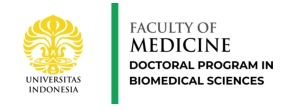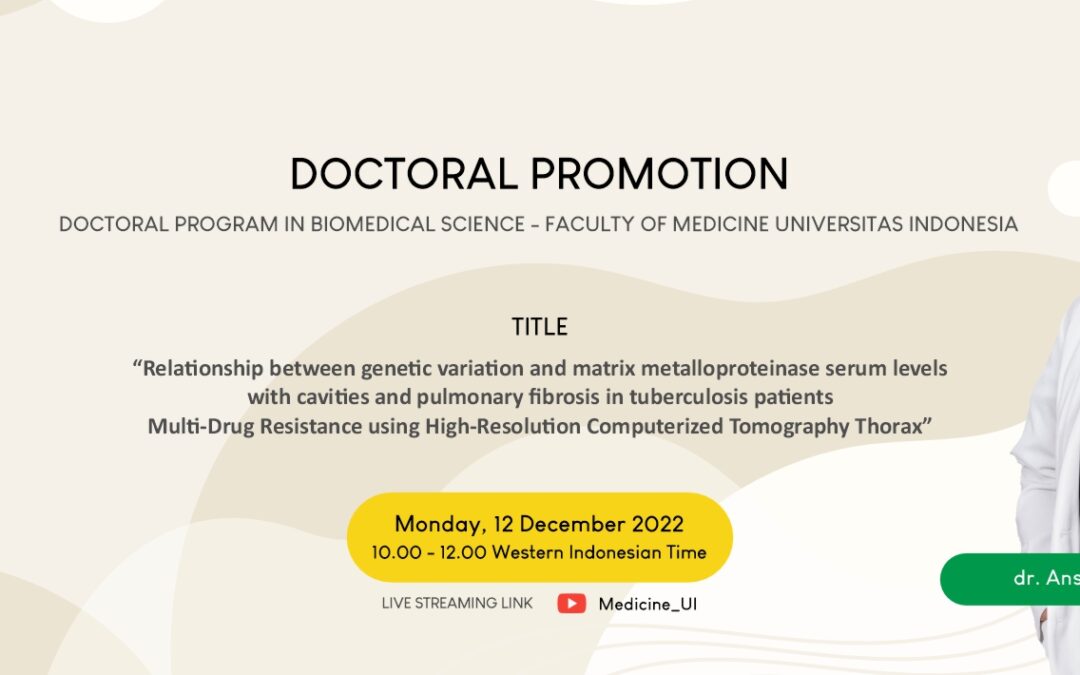By: Dr.dr. Anse Valentiene Messah, Sp.Rad.,T.R(K)
Pulmonary tuberculosis (TB) is an infectious disease caused by Mycobacterium tuberculosis (MTB), and until now it is still a global problem in the world, especially in Asian countries, and Indonesia is no exception. Antibiotic treatment is still an option for TB. However, prolonged and inadequate therapy can lead to resistance or insensitivity to one or even several anti-tuberculosis drugs.
The increase in TB resistance cases occurs in almost all parts of the world, especially in Indonesia. WHO reports an increase in the incidence of TB in Indonesia is increasing every year. Many risk factors can influence the process of developing TB resistance. Another important risk factor is the host’s immune system which is related to lung damage. The development of a strategy to assess the presence of mutations (gene deviations) in genetic factors is a research target developed related to a person’s susceptibility to infection with resistant TB.
The CT Scan tool is a sophisticated examination to see damage to the lungs that is accurate to see lung damage to the most distal airways. This tool has an accuracy of up to 98% for chest X-rays. Resistant TB disease is an infectious disease with extensive lung damage, including cavities and fibrosis. The cavity is damage to the lung that is seen as an air-filled cavity with thick walls, while fibrosis is lung tissue replaced by connective tissue, causing reduced lung function. To see the damage, it is necessary to know about the susceptibility of a person to a resistant TB infection and how the CT scan of his lungs looks. One of the causes of lung damage is the host’s genes that damage lung tissue, namely matrix metalloproteinases 1 and 9 (MMP-1 and MMP-9). Both of these genes are proteins that are in lung tissue and are thought to be dangerous for lung conditions if mutations occur.
Research related to efforts to inhibit the development of extensive lung disease by knowing the susceptibility of each individual to the occurrence of resistant TB by linking the MMP-1 and MMP-9 genes with a description of lung damage (characteristics of cavities: number, diameter, and wall thickness and distribution of pulmonary fibrosis) using a tool advanced CT scan of the lungs. It is hoped that from this study the possibility of widespread lung damage can be identified earlier by looking at the number of these two genes in the serum (blood), then linked with genetic testing.
The implementation of this study was carried out with resistant TB patients who were known through medical records (patient data at the hospital) and the results of the Molecular Rapid Test (TCM) lab examination. Next, a venous blood sample was taken and a thoracic CT scan was performed. Then the blood is burned from serum and plasma, and stored in a freezer with a temperature of -40C (specifically for storing biological materials). The results of the CT Scan examination are stored on a CD or external disk and evaluated by a Radiology Specialist in the Thoracic Division. Serum brought to
In the lab, DNA isolation (DNA samples) is tested, and PCR is then sequenced (primer determination (or primer sequence) of unbranched biopolymer chains). Sequencing produces symbolic linear representations called sequences which summarize most of the atomic level structure of the molecule sequenced to produce sequences DNA is described as a string of alphabetic symbols of the nucleotides that make up DNA, namely “A” (adenine-based nucleotides), “T” (thymine-based nucleotides), “G” (guanine-based nucleotides), and “C” (cytosine-based nucleotides with Sanger method. The evaluation results of a thoracic CT scan were correlated with the sequencing results.
The results showed that lung damage (cavity and fibrosis) was the most common disorder and was found more in resistant TB than drug-sensitive TB. Examination of the amount of MMP-1 and MMP-9 in the patient’s serum does not cause lung damage in resistant TB patients. The results of the CT scan were compared and related to the sequencing results, it was found that the T allele is a 2x prevention factor for TB resistance. The G/G MMP-1 genotype and the MMP-9 T/T genotype can be related to the cavity wall thickness.
In conclusion, for lung damage that often occurs in resistant TB, the MMP-1 gene is a 2x prevention factor for resistant TB. The G/G MMP-1 genotype and the MMP-9 T/T genotype can cause a thicker cavity wall thickness than sensitive TB drugs.

